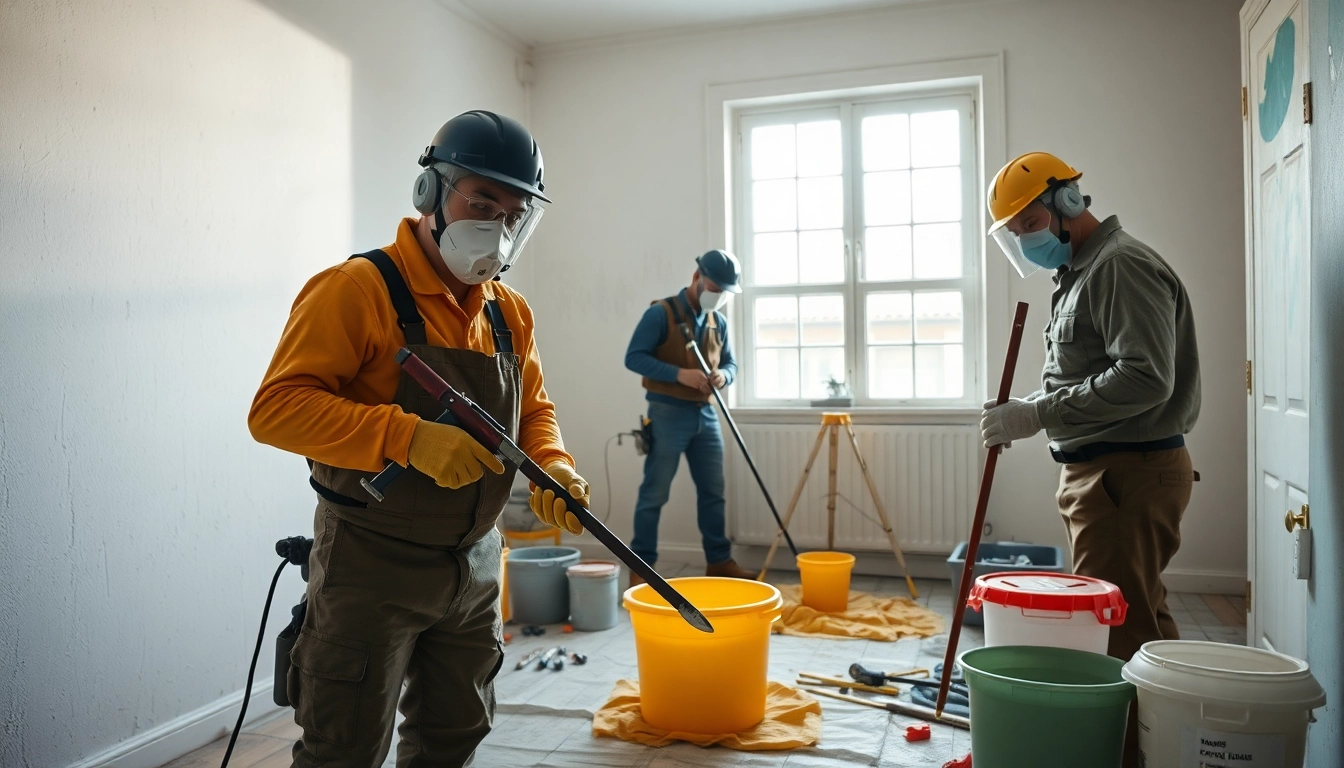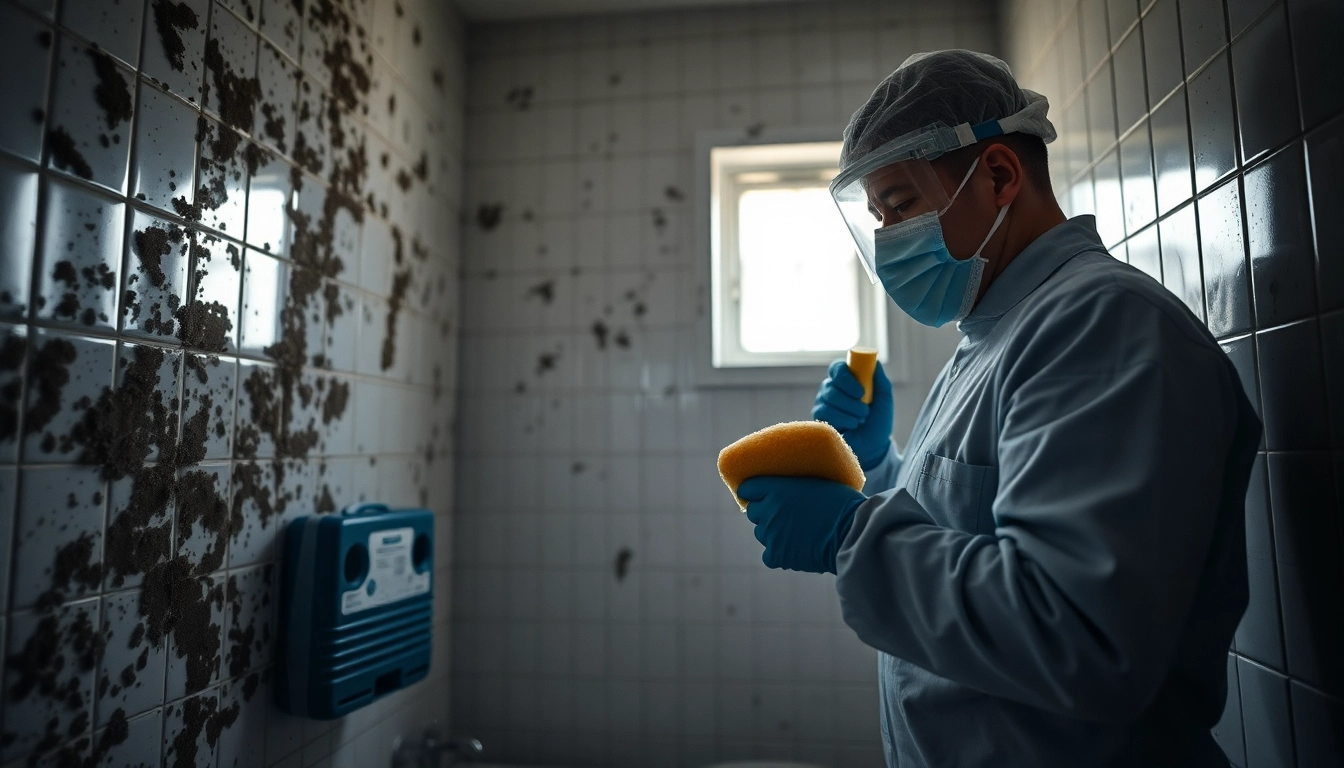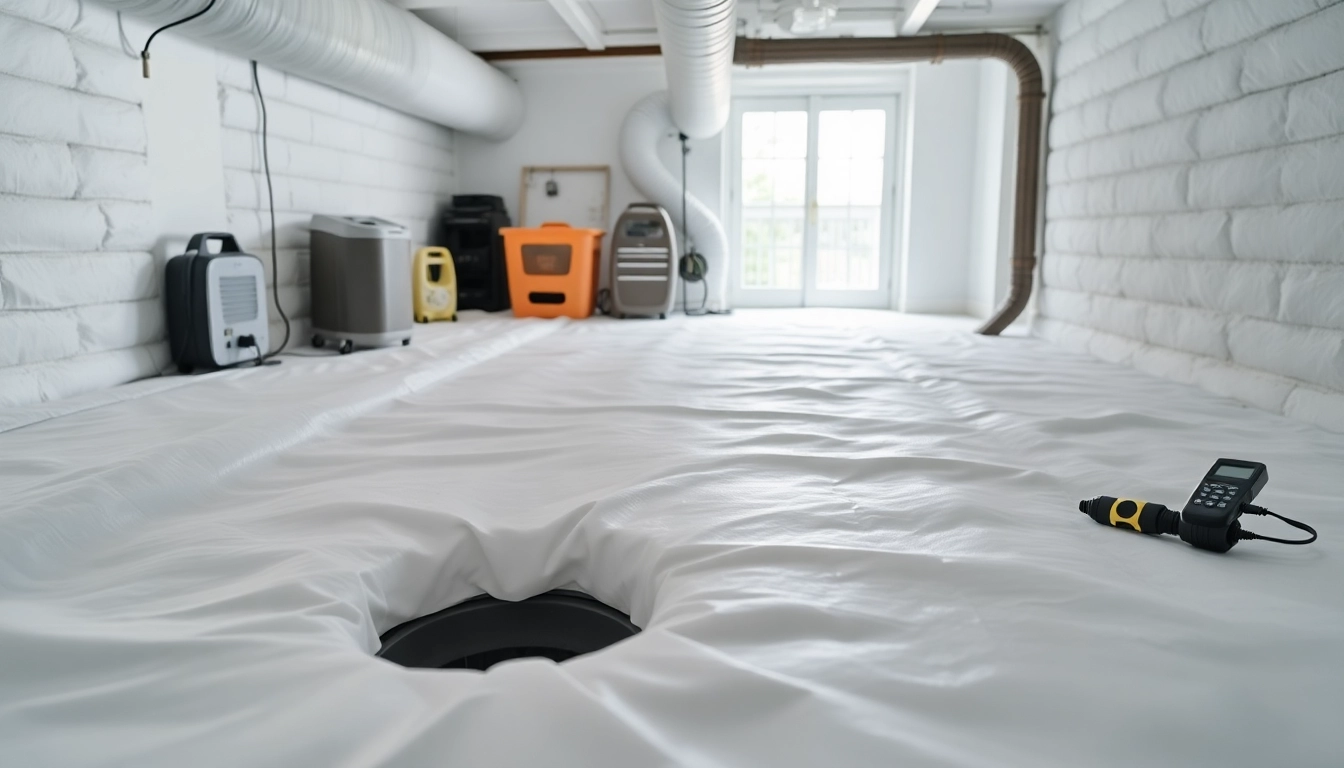Essential Guide to Lead Paint Removal: Effective Techniques and Safety Protocols
Understanding Lead Paint and Its Risks
What is Lead Paint?
Lead paint is a type of paint that contains lead, a heavy metal that can be toxic to humans and the environment. Historically, lead was added to paint for its durability and ability to inhibit corrosion. Used extensively in homes built before 1978 in the United States, lead paint can often be found in layers beneath the more contemporary coatings applied over it. Understanding the properties of lead paint is crucial, especially for homeowners striving to maintain a safe living environment.
Health Risks Associated with Lead Exposure
Exposure to lead can have severe health consequences, particularly for children and pregnant women. Even a small amount of lead ingested or inhaled can lead to cognitive impairments, developmental delays, and various health issues. In adults, lead exposure can result in high blood pressure, headaches, and reproductive complications. The adverse effects of lead are cumulative, meaning that the more one is exposed over time, the more serious the potential health risks become.
Identifying Lead Paint in Your Home
Identifying lead paint in your home is a key step in ensuring safety. Homes built before 1978 should be tested for lead if they haven’t been inspected already. Common areas to check include windows, doors, ceilings, and baseboards, where lead paint is often found peeling or chipping. Homeowners can purchase lead testing kits or hire certified professionals to conduct thorough inspections. Understanding where lead paint is likely to be located will help in managing the risks associated with it.
Lead Paint Removal Methods
Preparation for Lead Paint Removal
Before undertaking any lead paint removal procedure, it’s vital to prepare adequately. Thoroughly assessing the scope of the project will help in determining which removal method is most appropriate. Proper safety gear, including respirators, gloves, and protective clothing, must be worn to prevent exposure. Additionally, removing furniture and covering floors with plastic sheets can help contain the lead dust that may be generated during the process.
Safe Techniques for Effective Lead Paint Removal
There are several methods for removing lead paint, each with its advantages and disadvantages. Common techniques include:
- Encapsulation: This involves sealing the lead paint with a special coating to prevent exposure. While effective, it does require regular monitoring to ensure the integrity of the seal.
- Stripping: This method removes the paint through chemical strippers or heat guns. It’s essential to contain any debris generated during this process to avoid lead contamination.
- Sanding: Carefully sanding lead paint can effectively remove it, but this method also creates considerable lead dust and requires strict adherence to safety protocols.
Regardless of the method chosen, the most important aspect of lead paint removal is to follow safety practices diligently. This includes maintaining a wet workspace to minimize dust and ensuring proper ventilation during the removal process.
Disposal and Containment Best Practices
After the removal of lead paint, it is crucial to handle the waste properly. Lead-laden debris must be disposed of in accordance with local regulations, often requiring specialized containers for hazardous waste. Seal all removal materials in plastic bags or containers before disposing of them to prevent contamination. Cleaning the area thoroughly with a HEPA vacuum and damp cloths can help ensure the space is free of lead dust remnants.
Choosing Professional Help for Lead Paint Removal
When to Hire Professionals
In many instances, hiring a professional service for lead paint removal is advisable. Homeowners should consider enlisting the expertise of certified contractors if:
- The home has a significant amount of lead paint that requires extensive removal.
- Homeowners do not feel comfortable or qualified to handle the removal themselves.
- There are young children or pregnant women in the household, increasing the urgency for effective and safe removal.
Professionals can ensure the removal is performed safely and in compliance with regulations, providing peace of mind and reducing the risk of health hazards.
How to Select a Qualified Lead Paint Removal Contractor
Choosing a qualified contractor involves careful research and consideration. Homeowners should look for contractors who are certified in lead paint handling and removal according to local and federal regulations. Check references and reviews to gauge the contractor’s reputation and reliability. Additionally, request cost estimates and compare them to ensure a fair range. Transparent communication regarding the methodologies used and safety protocols followed can also indicate the professionalism of the contractor.
Questions to Ask Before Hiring
Prior to hiring a lead paint removal contractor, homeowners should ask several key questions to ensure they are making an informed decision:
- What methods do you use for lead paint removal?
- Are you certified and licensed to remove lead paint?
- Can you provide references from previous clients?
- What safety protocols do you have in place to protect my family during the removal process?
- How do you ensure proper disposal of lead waste?
These questions will provide insight into the contractor’s expertise, safety measures, and commitment to quality work.
Regulations and Guidelines on Lead Paint Removal
Overview of Local and Federal Regulations
There are numerous regulations governing the removal of lead paint to safeguard public health. In the United States, the Environmental Protection Agency (EPA) oversees lead regulations, particularly under the Renovation, Repair and Painting (RRP) Rule, which mandates that contractors use lead-safe work practices when working in homes built before 1978. Local regulations may also apply, often requiring specific permits and notifications to ensure compliance at all levels.
Importance of Compliance in Lead Paint Projects
Compliance with regulations is not optional; it plays a critical role in protecting public health and avoiding legal repercussions. Failing to adhere to lead paint removal standards can expose individuals and the community to lead hazards. Furthermore, property owners may face significant fines and liabilities if their lead paint removal is not compliant, which can also impact property values.
Resources for Homeowners on Lead Paint Laws
Homeowners seeking more information on lead paint laws and regulations can access several helpful resources:
- The EPA’s lead website offers comprehensive guidelines and information on lead safety.
- Local health departments or environmental agencies often provide resources specific to regional regulations regarding lead paint.
- Nonprofit organizations focused on environmental health may have educational materials and workshops that can aid in understanding lead hazards.
Long-term Preventative Measures After Lead Paint Removal
Maintaining a Lead-Free Environment
After successfully completing lead paint removal, ongoing efforts must be made to maintain a lead-free environment. Homeowners should continually monitor the painted surfaces in their homes for signs of wear and tear, such as chipping or peeling, which may indicate the potential for lead exposure. Regular maintenance and periodic professional inspections can prevent any resurgence of lead hazards.
Regular Inspections and Maintenance Recommendations
Establishing a schedule for regular inspections is vital to uphold a safe home environment. Homeowners should consider having their properties evaluated for lead hazards every two to three years, especially if they live in older homes. Additionally, promptly addressing any needed repairs and maintenance will contribute to an overall reduction of lead exposure risks.
Community Resources for Lead Safety Education
Many communities offer resources and programs aimed at educating residents about lead safety and best practices. Local health departments, education organizations, and community centers may provide workshops, informational materials, and access to certified professionals who can assist with lead paint concerns. Engaging in these resources fosters a knowledgeable community dedicated to lead safety.














Post Comment